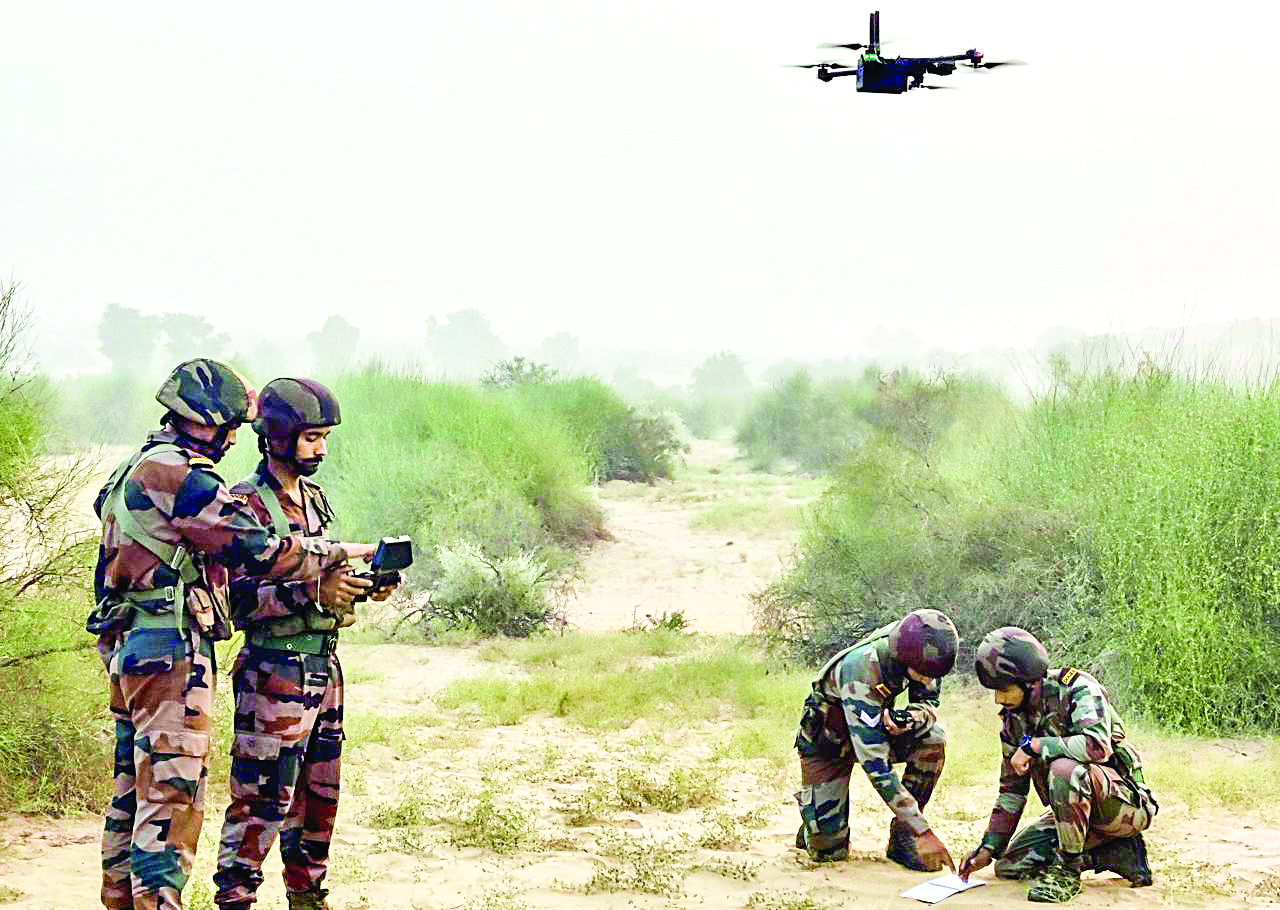New Delhi: As drone warfare continues to redefine modern combat, the Indian Army is undertaking a comprehensive overhaul of its air defence strategy. This transformation comes as conflicts such as the Russia-Ukraine war, Nagorno-Karabakh clashes, and Saudi Aramco drone strikes demonstrate the disruptive impact of unmanned aerial systems (UAS). Drawing lessons from these conflicts, India is leveraging indigenous innovations and recalibrating its defence doctrine to address emerging threats.
THE DRONE REVOLUTION
Recent global conflicts have shown how drones have become central to contemporary warfare. The Russia-Ukraine war showcased how Ukraine’s use of Ground-Based Air Defence Weapon Systems (GBADWS) forced Russian aircraft to operate at higher altitudes, increasing vulnerability. Similarly, the 2019 drone strikes on Saudi Aramco’s oil facilities disrupted 5% of global oil supplies, highlighting the strategic impact of low-cost, high-precision aerial threats.
Lieutenant General Sumer Ivan D’Cunha, Director General of Army Air Defence (AAD), noted: “The fashion of guns is back.” This statement signals the Army’s renewed focus on traditional weapon systems, upgraded with modern technology. Lt Gen D’Cunha further stated, “Managing the tactical battle area means providing freedom of action in the air and freedom of manoeuvre on the ground.” The evolving doctrine incorporates layered defence systems blending
“In today’s world, every individual on the battlefield is vulnerable,” remarked Lt Gen D’Cunha, highlighting the increasing threat from drones capable of carrying lethal payloads. He emphasised that the challenge is no longer just about detecting fighter jets or missiles but about managing thousands of drones.
RETHINKING AIR DEFENCE: INDIA’S STRATEGIC RESPONSE
India’s evolving air defence philosophy is anchored in the doctrine of “Centralised Control, Distributed Network Operation, and Decentralised Execution,” as articulated by Lt Gen D’Cunha. This approach provides soldiers with greater autonomy to counter aerial threats while ensuring operational coordination.
A cornerstone of this strategy is the planned induction of 220 indigenous successor guns to replace ageing L-70 and Zu-23mm systems. “Smart ammunition will redefine our operational efficiency. One smart round can replace 17 conventional rounds, increasing kill probability and reducing logistical burdens,” said Lt Gen D’Cunha. Trials are scheduled for July 2025, with contracts expected by mid-2026.
SMART AMMUNITION AND AI INTEGRATION: FUTURE-READY CAPABILITIES
“The integration of AI is crucial in managing the deluge of data generated during drone-heavy conflicts,” noted Lt Gen D’Cunha. The Army anticipates managing 3,000-4,000 drones in a 400 sq km airspace, necessitating precise, cost-effective countermeasures.
The Akashteer command and control system, equipped with electronic Identification Friend or Foe (IFF) and AI-powered algorithms, will handle real-time threat analysis, ensuring seamless coordination among guns, radars, and missile systems. Over 200 Akashteer units are expected to be operational by March 2025, enhancing interoperability with the Indian Air Force.
BUILDING INDIGENOUS STRENGTH
Lt Gen D’Cunha emphasised the importance of indigenous solutions under the Aatmanirbhar Bharat initiative. “Our future depends on self-reliance and indigenous innovation,” he stated. The Quick Reaction Surface to Air Missile (QRSAM), developed by DRDO, with a 30 km range, exemplifies this effort. The contract is expected within the next four to five months, with the First of Production Model (FoPM) ready in 12 months.
Additionally, India is investing in Low-Level Light Weight Radars (LLLR), capable of detecting drones as small as the DJI Mavic from distances of up to 7 km—especially crucial for mountainous terrains where radar coverage density is essential.
COUNTER-DRONE CAPABILITIES
“The future battlefield will see a surge in drone-on-drone and rocket-on-drone combat scenarios,” said Lt Gen D’Cunha. The Integrated Drone Detection & Interdiction System (IDD&IS), co-developed by BEL and DRDO, uses multispectral detection and Directed Energy Weapons (DEWs) such as LASERS and High Power Microwave systems. Nine additional units are planned.
Emerging capabilities include vehicle-mounted counter-drone systems armed with 64 rockets, as well as experimental railgun technology, though this remains conceptual due to power and mobility challenges.
REGIONAL DYNAMICS
India’s recalibration of its air defence strategy is driven by modern military trends. It aims to counter China’s UAV expansion and Pakistan’s use of drones for smuggling and potential cross-border strikes. Strengthening indigenous air defence systems is critical to ensuring India’s tactical superiority in the Indo-Pacific region.
CHARTING THE PATH FORWARD
While India’s long-term air defence overhaul is promising, Lt Gen D’Cunha concluded that addressing short-range vulnerabilities remains a top priority. “Securing India’s skies demands not just advanced weapons but an adaptable military doctrine where technology and tradition converge,” he asserted.
As India prepares for an era dominated by drones, lasers, and AI, the underlying strategy is clear: indigenous innovation, layered defence systems, and AI-driven intelligence will define India’s success in future warfare.
*Ashish Singh is an award-winning senior journalist with over 18 years of experience in defence & strategic affairs.

